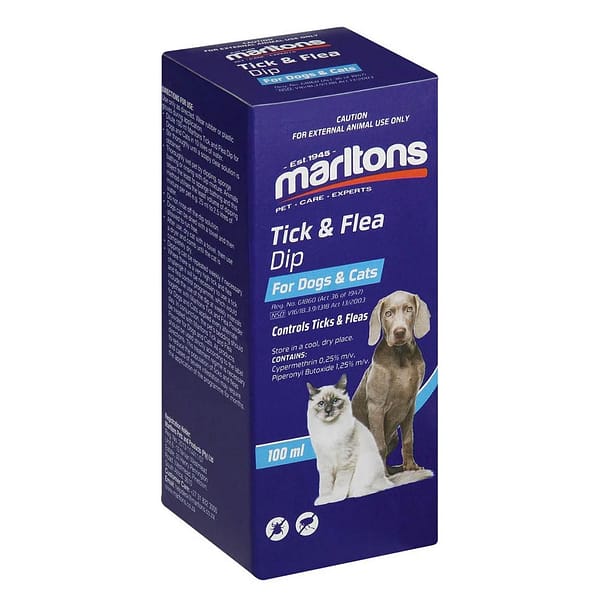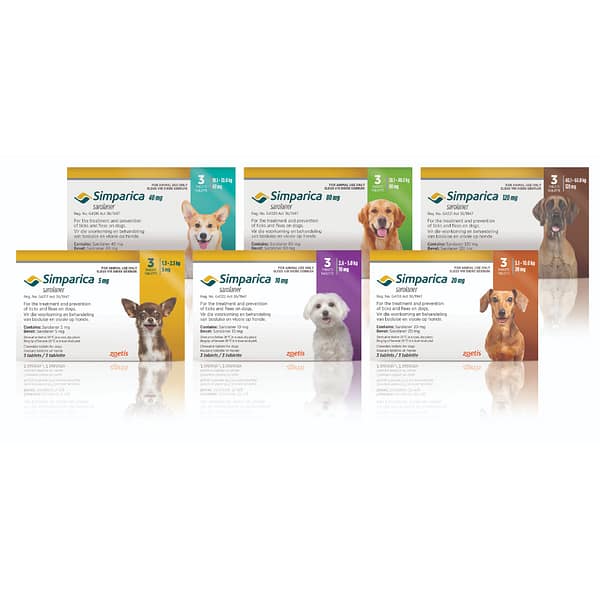Like microchipping, sterilisation, vaccination, pet food, toys, beds, blankets and grooming paraphernalia, tick and flea treatments are an essential item on the shopping list of how to be a responsible pet owner. This is a tough one for many pet pawrents because there are just so many tick and flea products to choose from, and so many pets in different situations, so we’re answering some of the most commonly asked questions on tick and flea treatments for your pets.
Q: Why should I treat my pets for ticks and fleas?
A: Ticks and fleas are external parasites – meaning they crawl onto your pet from the outside, bite into their skin and drink their blood. They can quickly reproduce and cause a terrible infestation on your pet and in your home! They are BAD for pets because they can cause blood-related illnesses that can seriously harm and even kill your pets. Fleas carry tapeworms, so if your pet ingests a flea, they will likely acquire an internal parasite as well (this is why regular deworming is also very important). Preventative treatments for ticks and fleas are the best defence against serious illness and death. Keeping these pests off your pets ensures they stay away from you as well!
Q: What types of tick and flea treatments are available?
A: There are so many treatments to choose from:
Q: I keep my pets indoors. Do they still need tick and flea treatments?
A: Tick and flea eggs and larvae are tiny… as in, tiny-tiny. They can attach to your clothes and shoes from other contaminated places; juvenile ticks and fleas can hitch a ride into your home on the backs of rodents and other outdoor critters, only to come into contact with your indoor pets. Dogs and cats can get ticks and fleas from anywhere, and while indoor pets are less likely to be affected, it’s not impossible, so you should at least have a parasite control product on hand.
Q: What is the best tick and flea treatment for my cat?
A: Whatever type of treatment you choose, make sure it is indicated for cats. Tick and flea treatments for dogs can be totally toxic to cats and even kill them. Similarly, don’t double dose on your cat’s treatment as this can cause adverse reactions. Follow the instructions on the package insert carefully and accurately. The most common treatment of ticks and fleas on cats is with a spot-on product, which is applied on the back of the neck so it can spread through the cat’s skin. Cats also do well with collars, powders and sprays, but make sure that if your cat is a heavy groomer, she doesn’t ingest too much of the product. If your cat has sensitive skin and can’t tolerate the chemicals in tick and flea treatments, then fortunately there’s an ultrasonic tick and flea repellent device to keep the pests away.
Q: What is the best tick and flea treatment for my dog?
A: The tick and flea treatment you choose for your dog will depend on many things. A spot-on treatment is not going to be ideal for your dog if he or she:
- swims regularly
- is very friendly with any cats (they must NOT ingest any spot-on product for dogs)
- has regular skin infections or allergies
If your dog is generally healthy and not allergic to any medications, not pregnant and lactating, and not already sick, a tick and flea prevention chewable tablet is the way to go. Most chew products give dogs up to three months’ protection from ticks and fleas, so they are very convenient. If your dog has a history of seizures or a genetic condition that makes them sensitive to medications, they would be an excellent candidate for a spray-on product, regular baths with a tick and flea shampoo, or even an ultrasonic tick and flea repellent, which is worn on your dog’s collar. If none of these are ideal for your dog, you could attack the problem manually with a tick pick or a flea comb, but this is time-intensive and requires you to be very diligent with your dog’s condition.
Keep in mind that even if you’ve treated your animals for ticks and fleas, there may still be eggs and larvae in their beds and on your carpets and furniture. Consider buying a tick and flea powder with which to dowse your pets’ beds and the furniture they’re allowed onto. Wash bedding covers, blankets and any other machine-washable items your pets may have come into contact with and on which they may have deposited tick and flea eggs.
Q: What is the most effective tick and flea product?
A: Some tick and flea treatment and repellent products work faster than others; while some work longer than others. The most effective product is the one that is applied correctly and consistently while there are ticks and fleas out and about. Once you’ve broken the life cycles of the ticks and/or fleas, then treatment simply becomes preventative.
ALWAYS discuss possible tick and flea prevention products with your vet, who should know your pets’ health profiles and who could direct you to the best tick and flea treatment for your dog or cat.
-
 Marltons Tick and Flea Dip for Dogs and CatsR80.00
Marltons Tick and Flea Dip for Dogs and CatsR80.00 -
 River Hound Tick & Flea Natural ShampooR90.00
River Hound Tick & Flea Natural ShampooR90.00 -
Marltons Tick and Flea Shampoo for Dogs and CatsR107.00 – R187.00
-
Tickless PetR695.00
-
Tickless Mini DogR995.00
-
Mikki Tick PickerR65.00
-
Credelio (lotilaner)R427.00 – R674.00
-
 NEXGARD Spectra for dogsR145.00 – R1 011.00
NEXGARD Spectra for dogsR145.00 – R1 011.00 -

Short-dated Sale
NEXGARD Chews for dogsR128.00 – R584.00 -
Bravecto Tick and Flea ChewR372.00 – R787.00
-
Advocate for DogsR524.00 – R970.00
-
AdvantixR700.00 – R1 089.00
-
Marltons Tick and Flea PowderR64.00
-
Simparica Sarolaner Chewable Tablets against Ticks and FleasR282.00 – R665.00
-
Bravecto Spot on for DogsR393.00 – R818.00
-
Bayopet Tick and Flea Collar for Small Dogs and PuppiesR137.00



















